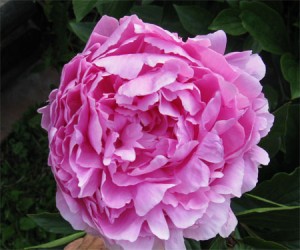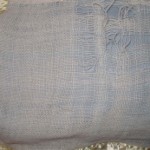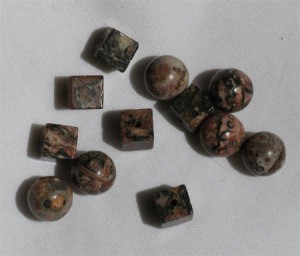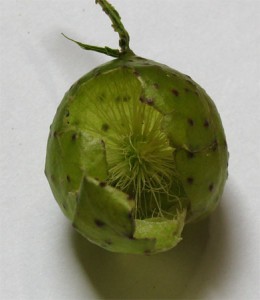Ruth was a flower lover. Although her garden wasn’t large, she had some beauties in it.
When she died, I went with Margaret, one of my dearest friends, to help her deal with some of her mom’s things. Because I’m an avid gardener, I asked if I could dig up a few divisions from her flower garden. My plan was to bring them home, nurture them for a few years, and then divide them further and replant them at Margaret’s. Margaret eagerly agreed.
The following spring I was happy to see the lovely burgundy flower on the columbine I’d transplanted, a color I didn’t have in my garden. Before I’d moved it I knew that some columbines multiply rapidly and others don’t, barely making it from year to year. Of course, Ruth’s burgundy columbine falls into the latter category. It’s still just one little plant.
But that’s not what this is about. It’s about the peony.
Now, I have peonies in a few different places at my house. I probably have a total of at least 2 dozen plants. None of these plants were here originally, and none were bought at a nursery. I have personally dug each one from its original location at some else’s house, divided it, and replanted in my yard. In addition to the peonies, I’ve got over 200 varieties of other perennials in my gardens, many acquired in the same fashion. I’m not bragging, simply trying to make the point that I’m not a virgin gardener. I know that peonies don’t really like to be transplanted, but that they’re quite forgiving if given half a chance.
I didn’t want to put Ruth’s little baby peony next to some of my big ones. I wanted this little gem to stand out, to be appreciated. So I prepared a new garden area and planted the root.
The peony sprouted the following spring as it should have, but it remained quite dwarfed. I was unhappy to see that the spot I’d picked out had sunk quite a bit. Now the peony was too low, risking being too wet. After consideration I decided to leave this baby alone. Remember, peonies aren’t fond of transplantation, and this little guy had been cut off from the mother root and moved just a year ago.
I left it where it was and waited. For three years. The foliage came up each spring, but never got lush. In fact, it never got big, and never set a bud. Then I decided I would dig it up and plant it in a space with my row of peonies. All the other peonies in the row were really happy, so this little guy should like it there. And I waited.
Next spring, the foliage came up with the other peonies. Yay! But it wasn’t long before the senior peonies completely overshadowed Ruth, not allowing her to get enough sun to do well. Just a few leaves on short stems, no flower buds. Again, I didn’t want to move her, so I tried to treat her well with compost & water and let her try again next year. And the year after that. And the year after that.
Finally I had to admit that Ruth was not going to cut it in my peony row, she had to come out and be moved yet again. I gave a lot of thought to where to put her now. It had to be a home that would be PERMANENT – no more transience for this flower.
So I prepared yet another spot for little Ruth, extending a garden area that had mostly short plants so that she could be the queen. I improved the soil with compost & peat moss, and carefully moved the roots. And waited. And waited. And waited. For the next few years the foliage came up, getting stonger, larger, and more lush with each season. I kept Margaret apprised of the progress of her mother’s peony each year. I often said, and really believed, “It looks good; it’ll make buds this year.” Alas, we were both disappointed.
But I was firm – I’m not moving Ruth again. Two years ago the peony finally set buds, and they were covered with ants. (Ants love both the smell and the taste of peony buds.) I was very encouraged. And disappointed when the half-dozen or so buds dried up without even coming close to opening. Yet we were making progress, at least we had buds.
Now’s as good a time as any to mention that Margaret had never seen her mom’s peony in bloom. Neither of us had any idea what color it was. The suspense was killing me!
So another year rolls around and spring comes again. Ruth looks great – the foliage is strong and pretty lush. She’s setting buds. I give her some extra special attention, providing a covering of compost and mulch, and give her some regular drinks of water. (In general, I don’t water any of the hundreds of plant in my garden. They have to make do with the rain.) I’m really hopeful, ‘cuz this year there’s probably a dozen buds on her. Then the chipmunks start in. They’re digging tunnels to beat the band, and coming up right under Ruth! I know this will present problems, because no plants like to have air on their roots, it’s a sure-fire killer. So I try to discourage the little mammals.
I start by borrowing Margaret’s high-priced sound emitter, supposedly guaranteed to be annoying enough to animals to send them running in the opposite direction. It worked for about a day, then the chippies got used to it. (I considered playing Barry Manilow really loud and endlessly, but decided I’D have to leave.)
I got another brainstorm. I’d just clipped my dog’s hair – I’d stuff some of that down the hole and put a bunch of it on the ground around the peony. That worked! For about 2 days. Then the chippies realized they weren’t going to get eaten alive and they were back.
Now I was breaking out the big guns – moth balls. I dropped over two dozen moth balls down that hole before they reached the ground level! I had no idea what effect they would have on the peony, but figured the chipmunks would really hate them. That did work, and for the rest of the season, but unfortunately I’d lost another year of possible peony blooms by that time.
That brings us to 2009, a full 12 years since Ruth had died. Spring arrives, and the peony looks great! The foliage is strong and lush, there are no visible chipmunk tunnels near its base, and it’s coming on strong. I give it a top dressing of compost and a bit more mulch to keep down the weeds, and am thrilled when it sets about 18 buds! I have no hope that I’ll see 18 flowers, of course, but figured at least one of them would reach maturity. And then we had a really dry May. Like most flowering plants, peonies need a fair amount of water to bloom. So I watched most of those buds dry up quickly. But I wasn’t going to let it all go, so I faithfully watered Ruth with my dishwater (I use only eco-friendly soap, so wasn’t worried about that). One of those buds kept getting bigger and bigger. Yippee!
Now, my most long-standing row of peonies is in full bloom, and Ruth is still a bud. But I’m not too worried, because the peonies I have elsewhere in my yard haven’t opened yet, either. Ruth’s bud is still growing. So I keep watering.
Then the other peonies all open their lovely heads, and Ruth’s one viable bud is standing still. I have assured Margaret that we WILL see a bloom this year, and I am NOT going to tell her that we’ll be disappointed again, so I keep watering.

Ruth, AKA Sarah Bernhardt, peony flower
Now you know I am nothing if not persistent. And long winded.
So tell me, how does YOUR garden grow?





